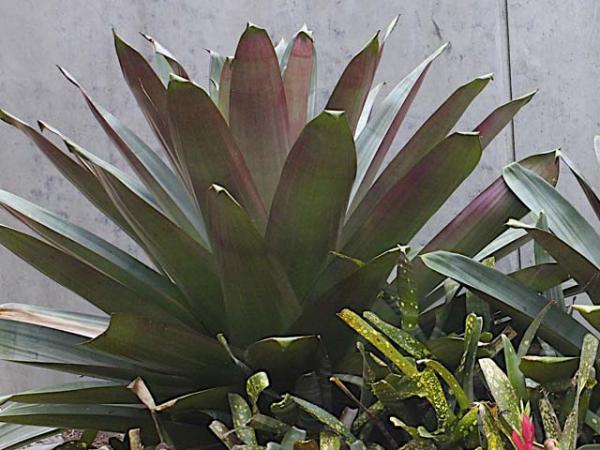Array
(
[0] => Array
(
[id] => 524
[is_published] => 1
[websiteID] => 5
[url] => /gardening/how-to-plant.php
[page_status] => Published
[number_of_ads] => 3
[can_use_editor] => 1
[last_modified_date] => 2013-09-16 00:00:00
[last_modified_by] => Alan
[checked_for_duplicate_content] =>
[title] => How to plant
[heading] => How to plant
[meta_description] => Learn how to plant correctly. Planting correctly will not only get your garden off to a flying start, but it will also ensure that your plants's root systems develop as healthily as possible, maximising their long-term stability.
[article_category_1] => Gardening
[article_category_2] =>
[article_category_3] =>
[article_category_4] =>
[article_category_5] =>
[business_category_1] => Landscaper
[business_category_2] => Nursery
[business_category_3] => Garden Designer
[business_category_4] => Landscape Architect
[business_category_5] =>
[number_of_google_mrecs] =>
[show_google_ad_bottom_of_page] =>
[show_get_quotes_top_of_page] =>
[show_get_quotes_rhs_of_page] =>
[show_directory_search_widget] =>
[show_trending_content_widget] =>
[show_facebook_widget] =>
[show_further_reading_section] => 1
[show_sponsors_section] => 0
[show_top_article_ad] => 1
)
[1] => Array
(
[id] => 577
[is_published] => 1
[websiteID] => 5
[url] => /gardening/top-plants-for-hedges-and-screens.php
[page_status] => Published
[number_of_ads] => 2
[can_use_editor] => 1
[last_modified_date] => 2014-01-29 00:00:00
[last_modified_by] => Alan Bron
[checked_for_duplicate_content] =>
[title] => Top plants for hedges and screens
[heading] => Top plants for hedges and screens
[meta_description] => Hedges and screens in gardens create privacy or screen out an unwanted view. Learn about which plants are best for this.
[article_category_1] => Gardening
[article_category_2] => Landscaping
[article_category_3] =>
[article_category_4] =>
[article_category_5] =>
[business_category_1] => Landscaper
[business_category_2] => Garden Supplies
[business_category_3] =>
[business_category_4] =>
[business_category_5] =>
[number_of_google_mrecs] => 0
[show_google_ad_bottom_of_page] => 0
[show_get_quotes_top_of_page] => 0
[show_get_quotes_rhs_of_page] => 0
[show_directory_search_widget] => 0
[show_trending_content_widget] => 1
[show_facebook_widget] => 1
[show_further_reading_section] => 1
[show_sponsors_section] => 1
[show_top_article_ad] => 1
)
[2] => Array
(
[id] => 202
[is_published] => 1
[websiteID] => 5
[url] => /gardening/native-grasses-dianellas-and-lomandras.php
[page_status] => Published
[number_of_ads] => 5
[can_use_editor] => 1
[last_modified_date] => 2013-09-16 00:00:00
[last_modified_by] => Alan
[checked_for_duplicate_content] =>
[title] => Native grasses and friends
[heading] => Native grasses and friends
[meta_description] => An exciting thing is happening in the world of Australian plants. Wild species that have tantalised gardeners in the past are now being improved to create a diverse palette of new varieties that offer all kinds of advantages. In particular, the necessity for water-wise, low maintenance gardens has inspired interest in plants that can be used as ground covers that will not only suppress weeds and erosion but also look fantastic.
[article_category_1] => Gardening
[article_category_2] =>
[article_category_3] =>
[article_category_4] =>
[article_category_5] =>
[business_category_1] => Landscaper
[business_category_2] => Nursery
[business_category_3] => Garden Designer
[business_category_4] => Landscape Architect
[business_category_5] =>
[number_of_google_mrecs] =>
[show_google_ad_bottom_of_page] =>
[show_get_quotes_top_of_page] =>
[show_get_quotes_rhs_of_page] =>
[show_directory_search_widget] =>
[show_trending_content_widget] =>
[show_facebook_widget] =>
[show_further_reading_section] => 1
[show_sponsors_section] => 0
[show_top_article_ad] => 1
)
[3] => Array
(
[id] => 523
[is_published] => 1
[websiteID] => 5
[url] => /gardening/ground-covers.php
[page_status] => Published
[number_of_ads] => 3
[can_use_editor] => 1
[last_modified_date] => 2013-09-16 00:00:00
[last_modified_by] => Alan
[checked_for_duplicate_content] =>
[title] => Ground covers
[heading] => Ground covers
[meta_description] =>
[article_category_1] => Gardening
[article_category_2] =>
[article_category_3] =>
[article_category_4] =>
[article_category_5] =>
[business_category_1] => Landscaper
[business_category_2] => Garden Maintenance
[business_category_3] => Garden Supplies
[business_category_4] => Garden Designer
[business_category_5] => Garden Tools
[number_of_google_mrecs] =>
[show_google_ad_bottom_of_page] =>
[show_get_quotes_top_of_page] =>
[show_get_quotes_rhs_of_page] =>
[show_directory_search_widget] =>
[show_trending_content_widget] =>
[show_facebook_widget] =>
[show_further_reading_section] => 1
[show_sponsors_section] => 0
[show_top_article_ad] => 1
)
)
Helpful articles
How to plant. Learn how to plant correctly. Planting correctly will not only get your garden off to a flying start, but it will also ensure that your plants's root systems develop as healthily as possible, maximising their long-term stability.
Top plants for hedges and screens. Hedges and screens in gardens create privacy or screen out an unwanted view. Learn about which plants are best for this.
Native grasses and friends. An exciting thing is happening in the world of Australian plants. Wild species that have tantalised gardeners in the past are now being improved to create a diverse palette of new varieties that offer all kinds of advantages. In particular, the necessity for water-wise, low maintenance gardens has inspired interest in plants that can be used as ground covers that will not only suppress weeds and erosion but also look fantastic.
Ground covers.
Plant description
Alcantarea imperialis is an epiphytic bromeliad with funnel shaped rosettes of pale reddish green leaves. It is the largest of Vrieseas, with red flower spikes up to 2 metres tall and leaves to 1.5 metres long. The plant likes to have the central funnel filled with water, which can be home to frogs and tadpoles.
Vriesea likes a bright to lightly shaded position, with some morning or afternoon sun. This plant likes some humidity, a regular spray of water will be appreciated. Likes a regular potting mix, orchid mix or can be grown epiphytically on trees or rocks. Keep moist but not wet, but can tolerate some dryness. Too much water in the root zone can cause rotting. Feed in spring and summer with a weak liquid fertiliser.
Propagation is by division of the small offsets called pups.
Additional plant information
Flowers
Flower colour: red and white
Flowering season: summer autumn
Plant size
Maximum height: 5 metres
Minimum height: 3 metres
Maximum width: 1.5 metres
Minimum width: not specified
Sunlight, frost & salt tolerance
This plant will tolerate full or partial sunlight.
Light frost tolerance.
Plant is salt tolerant.
Fauna attracting?
Yes. Attracts: Frogs, insects.
Climate
This plant species will grow in the following climates: cool, temperate, subtropical, tropical.
Soil types & conditions
Loam: moist, well-drained.
Clay: not specified.
Sand: moist, well-drained.
Diseases
Fungal rot in too wet conditions
Pests
Scale
Miscellaneous information
Planting season: Any.
Types of fertiliser: Half strength liquid fertiliser.
Find a nursery
Search for another plant

